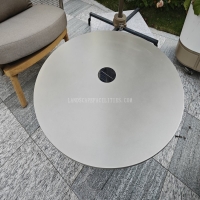Welcome to the website for landscape facilities products and knowledge.
How does the trash can’s design accommodate different waste compaction force distributions?
Modern trash can designs ingeniously address the challenge of uneven waste compaction force distribution, ensuring durability and efficiency. By incorporating reinforced structures, flexible materials, and smart mechanisms, these bins adapt to varying waste types and compaction pressures.
1. Reinforced Base and Walls: High-density polyethylene or steel-reinforced bins distribute compaction forces evenly, preventing deformation. This design is ideal for heavy or sharp waste, reducing stress points.
2. Flexible Inner Liners: Some bins feature adaptable liners that expand or contract based on waste volume, balancing pressure across the container. This minimizes wear and tear while maximizing space utilization.
3. Smart Compaction Systems: Advanced models use sensors and compactors to apply uniform pressure, automatically adjusting to waste density. This ensures consistent compaction without overloading specific areas.
4. Ergonomic Shapes: Curved or tapered designs redirect forces toward the center, reducing lateral strain. Such shapes are common in pedal bins or touchless models, enhancing longevity.
5. Modular Components: Interchangeable parts allow customization for different waste streams (e.g., recyclables vs. organic waste), optimizing force distribution for each type.
By integrating these features, trash cans achieve balanced force distribution, improving functionality and sustainability in waste management.
Related search:

Recommendation
Outdoor stainless steel table with solar-powered ambient lighting feature - excellent design.